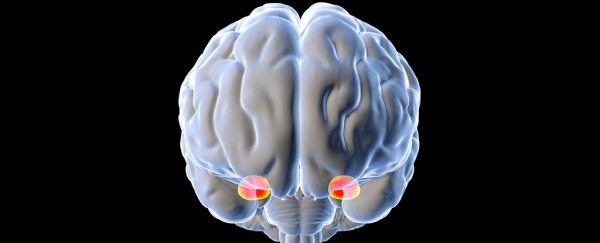A brain structure called the amygdala grows too fast in babies who are diagnosed with autism by age 2, a new study suggests.
The study researchers found that this overgrowth occurs between 6 and 12 months of age, before children are typically diagnosed with autism.
The findings, published Friday (March 25) in The American Journal of Psychiatry, suggest that therapies for children at high risk of autism may have the best chance of working if they start in infancy.
"Our research suggests an optimal time to start interventions and support children who are at highest likelihood of developing autism may be during the first year of life," study senior author Dr. Joseph Piven, a professor of psychiatry and pediatrics at the University of North Carolina at Chapel Hill, said in a statement.
The amygdala is an almond-shaped structure deep in the brain that's involved with processing emotions, including feelings of fear, as well as interpreting facial expressions.
 Illustration of brain regions. (NIH Image Gallery/Flickr/Public Domain)
Illustration of brain regions. (NIH Image Gallery/Flickr/Public Domain)
Researchers already knew that the amygdala appears larger in school-age children with ASD compared with children without ASD, but exactly when this enlargement starts was not known.
Related: 10 things you didn't know about the brain
In the new study, researchers scanned the brains of more than 400 infants, including 270 who were at higher risk of developing autism because they had an older sibling with the condition; 109 infants with typical development; and 29 infants with Fragile X syndrome, a genetic disorder that causes developmental and intellectual disability.
The children underwent MRI scans at ages six months, 12 months, and 24 months. By age 24 months, 58 (or about 21 percent) of the at-risk children had been diagnosed with ASD.
The researchers found that at age six months, all of the children had similar-sized amygdalae. But by 12 months, the children who would later develop autism had enlarged amygdalae compared with children who didn't develop autism and those with Fragile X syndrome.
What's more, those with the fastest rate of amygdala growth had the most severe symptoms of autism.
"The faster the amygdala grew in infancy, the more social difficulties the child showed when diagnosed with autism a year later," study first author Mark Shen, an assistant professor of psychiatry and neuroscience at UNC Chapel Hill, said in the statement.
The researchers hypothesized that early problems with visual and sensory information processing in infancy may put stress on the amygdala, resulting in its overgrowth. (The amygdala receives signals from the brain's visual system and other sensory systems in order to detect threats.)
Studies have found that children that go on to be diagnosed with autism have problems as babies with how they pay attention to visual stimuli.
Interventions in babies at high risk of autism might want to focus on improving visual and other sensory information processing in babies, Piven said.
Early interventions for autism usually begin around two or three years of age, when a child is diagnosed with autism, according to the National Institutes of Health.
However, some studies have tested interventions in babies that were at risk for autism because they had a sibling with autism or in babies that showed early symptoms, such as visually fixating on certain objects, according to the autism news site Spectrum.
For example, a small 2014 study tested an intervention in children ages 6 to 15 months, which taught parents new ways of interacting with their babies, such as methods to shift the baby's attention away from an object they were fixated on; and found that the therapy reduced autism symptoms by age 3, Spectrum reported.
Related content:
Having a baby: Stages of pregnancy by trimester
This article was originally published by Live Science. Read the original article here.
